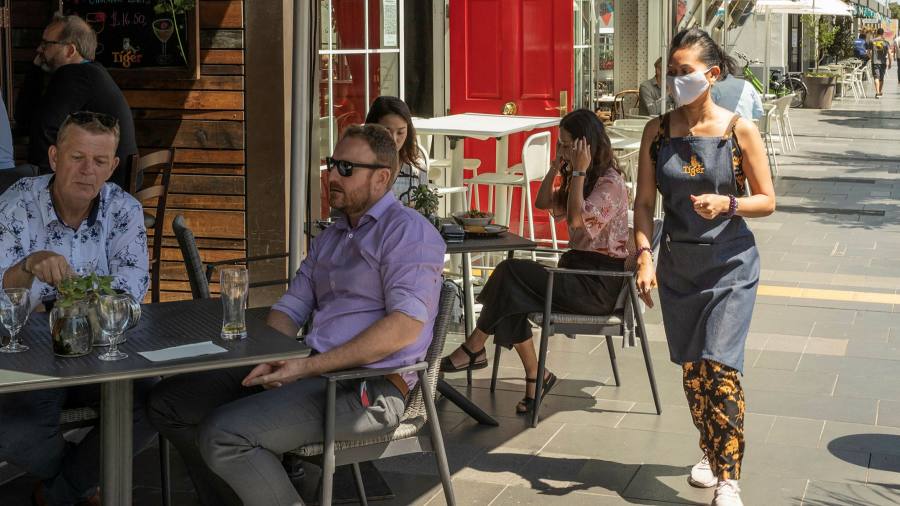Australia and New Zealand’s decision to shut their borders to non-residents during the pandemic has helped suppress Covid-19, enabling economic growth and corporate profits to beat expectations.
But 15 months on, critics warn that these “hermit nation” policies are now causing significant problems for businesses, which face worsening skills shortages that are raising costs and denting output.
Many industries are advocating a relaxation of border and visa rules, even as the highly infectious Delta strain of coronavirus prompts authorities to tighten rules to protect both nations’ largely unvaccinated public.
The booming agriculture and mining sectors in Australia, which have helped claw the economy out of its first recession in almost 30 years, are among the worst affected. While in New Zealand restaurants and cafés face such critical staff shortages they recently held a nationwide protest to lobby the government to relax visa rules for overseas workers.
The jobless rates in both Pacific nations have declined rapidly due to government stimulus and the early reopening of their economies.
Australia’s unemployment rate hit a decade low of 4.9 per cent in June, although this could rise as a result of fresh outbreaks of Covid this month. New Zealand’s jobless rate is 4.7 per cent.
Lachlan Dobson, co-owner of Kimberley Produce, Western Australia’s largest banana producer, is one of thousands of farmers struggling to hire staff because most of the 40,000-strong army of foreign backpackers and seasonal workers have gone home.
“We took the difficult decision to just knock over a portion of our crop rather than leave it to cause biosecurity problems, such as fruit flies,” said Dobson, who estimated the loss of produce at A$1.4m (US$1m).
Australian farmers have reported A$58.4m in crops lost because of labour shortages since December, according to a National Crop Lost Register set up by Growcom, a farm lobby group.
Western Australian miners say they could face a shortage of 40,000 workers over the next two years, threatening a sector that contributed A$83bn to the local economy in 2019-20.
Rio Tinto on Friday cited coronavirus-related “restrictions on movement and availability of people” as a factor contributing to weaker than expected iron ore production in the three months to the end of June.
This followed warnings by BHP, Mineral Resources and gold miner Santa Barbara that skills shortages in Western Australia are raising costs and denting production.
“What would have been a labour force tightening due to strong demand has become a squeeze because of Covid-19 restrictions,” said Paul Everingham, chief executive of CME, a resources industry lobby group.
Iron ore miners are poaching workers from gold miners with the lure of higher wages, says Everingham, who is lobbying government to create new visas for foreign workers and explore ways to fly them into the country.
He warns that action is needed to avoid the experience of the last mining boom in 2010-12 when wages and costs rocketed only to be followed soon after by a bust.
Most analysts say there is little prospect of Canberra easing border rules in the near term because of coronavirus lockdowns, which cover almost half the country’s population following outbreaks in Sydney and Melbourne.
Easing border restrictions for business is politically tricky with 34,000 Australians stranded overseas. And last week, tougher flight caps were imposed on arrivals, which halved the number of passengers allowed to enter the country to just over 3,000 a week.
Health experts say Australian and New Zealand authorities cannot reopen their borders yet because of low Covid immunisation rates, with just 10.8 per cent and 11.7 per cent of the respective populations fully vaccinated.
Australia’s Treasury forecasts the international border will not reopen until at least mid-2022.
In the meantime, Canberra and Wellington are easing visa restrictions for foreign workers already working in their countries to try to retain as many overseas workers as possible.
New Zealand has also introduced a critical workers’ scheme, which has enabled 17,000 skilled employees to enter the country to support business.
But until vaccination rates rise to levels approaching where herd immunity becomes possible, businesses will probably have to rely on hiring an ever-dwindling pool of homegrown workers, say analysts.

